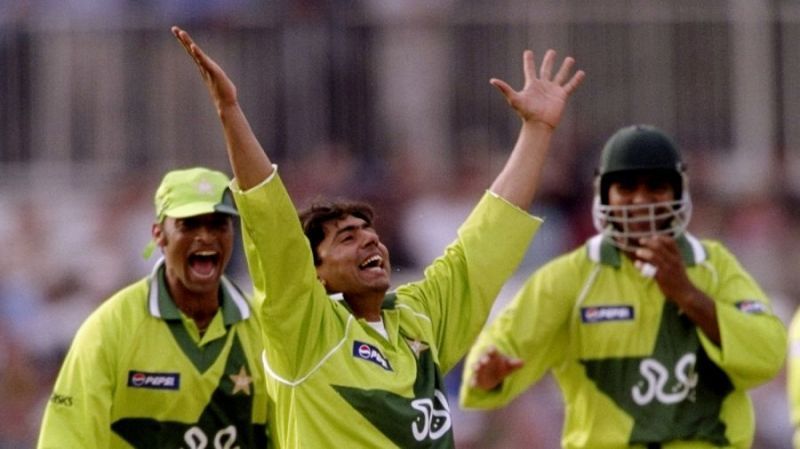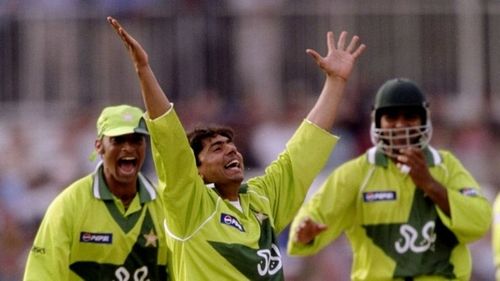
SK Flashback: Tantalising Saqlain spins out World Cup’s 'doosra' hat-trick in 1999
A finger spinner’s ‘doosra’ is a common term now. Earlier the word used was ‘armer’. It was at this time, during the turn of the century, that the ‘doosra’ came to be widely known, courtesy the Pakistanis.

Chasing Pakistan’s 271 for nine, Zimbabwe’s challenge in the 1999 World Cup was beginning to peter out. They were 123 for seven after 40 overs. It was just a matter of time before they folded up. Saqlain Mushtaq saw to it that it would be over in a jiffy.
Often when tailenders offer stubborn resistance against the quicker bowlers on slow wickets, getting in line and presenting a straight blade, spinners are able to finish off the job. Tailenders find spin, and all the intricacies that go with it, confusing. This is what happened here. Saqlain’s figures were 6-1-16-0 as he came in to bowl to Henry Olonga. Saqlain tossed up the first ball to Olonga who groped forward not knowing whether it was the stock off-spinner or ‘the other one’ that fizzes through straight and sometimes even goes away. It was 'the other one', Saqlain's 'doosra'. Olonga was beaten as the ball dipped in flight, gripped the turf and deviated away just enough to elude the bat. Perplexed, Olonga over-balanced a bit, his back foot leaving the crease. In a flash, Moin Khan whipped off the bails. Olonga was stumped for five.
Adam Huckle came in next. Saqlain spun out almost an identical ball, holding it back just that wee bit more. It drew an identical response from the new batsman......and from the wicketkeeper. The result was the same - square-leg umpire David Orchard ruled Huckle stumped for zero. Watching all this, last man Mpumelelo ‘Pommy’ Mbangwa, would have been working out a few ways to counter the wily Saqlain. For Saqlain it was important to maintain his concentration to achieve a rare World Cup hat-trick.
Mbangwa’s calculations must have gone awry as Saqlain this time bowled his stock off-spinner that thudded into the pads. As the Pakistanis appealed excitedly, umpire Steve Bucknor pondered characteristically for that tantalising moment or two, then suddenly pointed his long index finger skywards. Mbangwa was leg-before-wicket for a duck. Saqlain had pulled off the second hat-trick in the World Cup.
World Cup’s first hat-trick was taken 12 years earlier by India’s spirited little medium-pacer Chetan Sharma against New Zealand at Nagpur. Chaminda Vaas and Brett Lee emulated the feat in 2003, Lasith Malinga in 2007 and 2011, Kemar Roach in 2011, and Steven Finn and Jean-Paul Duminy in 2015.
This was Saqlain’s second hat-trick in One-day Internationals, having achieved the feat also against Zimbabwe at Peshawar in 1996-97. He became the second Pakistani after Wasim Akram to bag a hat-trick twice in One-day Internationals. It was the 13th hat-trick in the 1479 One-day Internationals played till then.
It was a memorable way to round off the super-six stage. Saqlain finished with three for 16 off 6.3 overs as Pakistan advanced confidently into the semi-finals. Zimbabwe were left at others’ mercy, awaiting the outcome of the last two super-six matches to know their fate.
Saqlain and Shane Warne were the two spinners to shine in a tournament dominated by seamers. Here Saqlain showed how incisive spinners can be even in One-day cricket. It is a far cry from the early days when spinners were considered a dispensable commodity in this form of the game. Just one final thought: the most economical figures in the World Cup, of a bowler completing his full quota of overs, belong to a master spinner, Bishan Singh Bedi. They read 12-8-6-1 against East Africa in 1975.
Pakistan: 271 for 9 wickets (50 overs), Zimbabwe 123 all out (40.3 overs) (CWC 1999)
Follow Sportskeeda for all the updates on World Cup live score, schedule, news, points table, live scores, most runs, most wickets and fantasy tips.